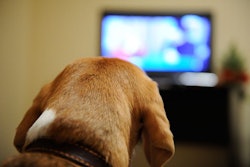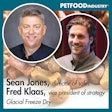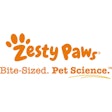
Dogs, cats and other pets are rarely referred to as “its” within the pet food industry. Pets take on pronouns worthy of personhood like he or she. This sets our industry apart from conventional mindsets and even the English language, while echoing other languages and cultures. Pet food professionals could apply this ethic to the development of their company’s sustainability initiatives.
Historically, all animals were objects, and still are under the law, in many nations. Even in the United States, animal cruelty law violation often resulted in only a slap on the wrist until high profile dog abuse scandals led to stricter enforcement and stronger penalties, reported NOLO, a legal reference publisher. While the treatment of animals as objects has a long legal precedent in Western European cultures, including the U.S., other groups granted personhood to animals long before the fur baby phenomenon.
Language’s influence on pet humanization
Some peoples have always referred to animals as people too. Verbs and other parts of speech in Western and Indigenous languages exemplify the cultural divide related to animals, in “Braiding Sweetgrass: Indigenous Wisdom, Scientific Knowledge, and the Teachings of Plants.” In the book, Robin Wall Kimmerer, Ph.D., a State University of New York professor, discusses her ancestral Potawatomi language’s abundance of verbs. Many of these verbs involve natural phenomena, such as water performing the action “to be a beach.” English has no equivalent of this since water lacks volition in Western conceptions of H20. However, in Kimmerer’s ancestral tongue, water had the option to lap at a beach, or slide along in a river, or laze in a pond. Likewise, grammar granted personhood to animals and plants, and verbs were conjugated as such.
Learning Spanish as a second language at 25 taught me something of what Kimmerer observed. Language defines the limits of thoughts in many ways. If there isn’t a way to express something verbally, even thinking of the concept can be difficult. In Spanish, objects have gender. How does that influence one’s thinking, when a table is female and a clock is male? In English, we have no means to refer to someone without using gender, unlike spoken Mandarin Chinese, which has only a gender-neutral third-person pronoun. These nuances of language become relevant as pet food professionals strive for inclusivity of each other, as well as other animals. Our language limits our minds.
Never mind the mind, pet owners’ hearts have adopted animals as surrogate members of the family. So much so that Packaged Facts Director David Sprinkle considers the sentiment to be nearly ubiquitous in the United States. Year after year in Packaged Facts surveys, pet owners say that they consider their dogs, cats and other animals as members of the family. At Petfood Forum 2021, Sprinkle commented that he barely considers it worthwhile to ask the question anymore, the humanization of pets is so universal and enduring. Pet parents don’t think of a pet as property so much as a responsibility, a duty. That is similar to the land ethic Kimmerer discussed. In many Indigenous cultures, ethical teachings encouraged a give and take with nature. Through reciprocal relationships, all parties benefited. Indigenous people managed ecosystems to boost the productivity of foods and medicines, while not undercutting the ability of the system to regenerate and provide for other organisms.
While much of the globalized economy has moved far from concerns over reciprocating with nature, pet owners form relationships with their animals that benefit all involved. Pet ownership serves as a vestige of that ancient connection to other animals, plants and aspects of nature. Now, as the environmental and societal bill comes due for economic development, restoring people’s connection to nature could start with sympathy for a fur baby. Pet owners are primed to care about other animals. Sustainability programs could incorporate this by including wildlife conservation, habitat restoration and similar initiatives. Promoting these programs could personify the wildlife to a degree that pure scientists would consider anthropomorphism, but that pet owners would understand as reflecting the similarity among humans another other beings.
















